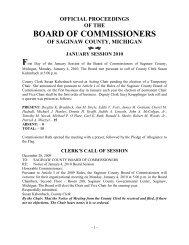The Metropolitan Transportation Planning ... - Saginaw County
The Metropolitan Transportation Planning ... - Saginaw County
The Metropolitan Transportation Planning ... - Saginaw County
You also want an ePaper? Increase the reach of your titles
YUMPU automatically turns print PDFs into web optimized ePapers that Google loves.
<strong>The</strong> <strong>Metropolitan</strong> <strong>Transportation</strong> <strong>Planning</strong> Process: Key Issues<br />
* Emissions reductions targets developed by the state environmental agency<br />
D<br />
Figure 4: All sources of pollution can be looked at for ways to reduce emissions and improve air quality.<br />
Clean Air Act:<br />
<strong>The</strong> Clean Air Act sets out the criteria by<br />
which transportation plans, programs,<br />
and projects in nonattainment and<br />
maintenance areas are assessed for<br />
compliance with air quality goals.<br />
<strong>The</strong> key transportation-related pollutants are ozone precursors, carbon monoxide<br />
(CO), and particulates (PM-10 or PM-2.5 or particles smaller than 10 microns or 2.5<br />
microns, respectively). <strong>The</strong> ozone precursors are pollutants that combine to form<br />
ground-level ozone, which in turn is part of smog. Ozone precursors are volatile<br />
organic compounds (VOCs) and nitrogen oxides (NOx). <strong>The</strong>se pollutants all<br />
emanate in part from on-road mobile sources and cannot exceed certain<br />
specified levels in a given region.<br />
Nonattainment areas are geographic areas that do not meet the federal air<br />
quality standards, and maintenance areas are areas that formerly violated but<br />
currently meet the federal air quality standards. If no violations of air quality<br />
standards have been found, the area is considered to be in compliance or<br />
attainment with federal air quality standards.<strong>The</strong> Clean Air Act (CAA) of 1990<br />
identifies the actions states and MPOs must take to reduce emissions from on-road<br />
mobile sources in nonattainment and maintenance areas.<br />
<strong>The</strong> CAA and Title 23 U.S.C. both require that transportation and air quality planning<br />
be integrated in areas designated by the U.S. Environmental Protection Agency<br />
(EPA) as air quality nonattainment or maintenance areas. In fact, in nonattainment<br />
and maintenance areas, federal funding and approval for transportation projects is<br />
only available if transportation activities are consistent with air quality goals through<br />
the transportation conformity process. <strong>The</strong> transportation conformity process<br />
includes a number of requirements that MPOs must meet (see section below on<br />
transportation conformity).<br />
An area can be nonattainment for one pollutant and in compliance for another.<br />
<strong>Transportation</strong> conformity is required for all ozone, carbon monoxide, nitrogen<br />
dioxide, and particulate matter nonattainment and maintenance areas.



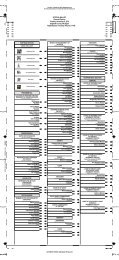
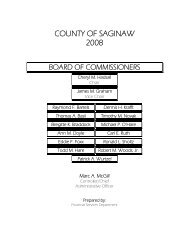
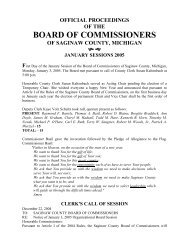
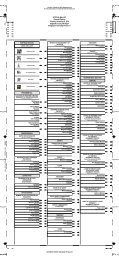

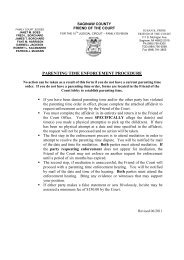
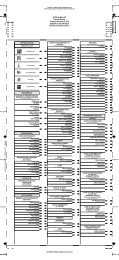
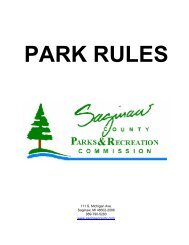

![[ Of Commissioners] - Saginaw County](https://img.yumpu.com/25951211/1/190x245/-of-commissioners-saginaw-county.jpg?quality=85)


